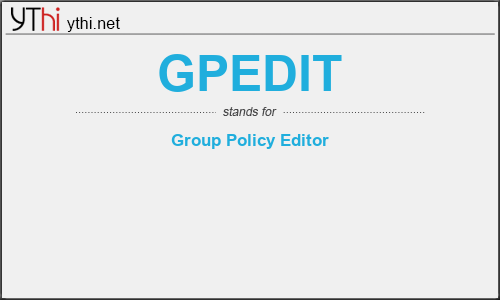What does GPEDIT mean? What is the full form of GPEDIT?
The full form of GPEDIT is Group Policy Editor
Local Group Policy Editor is a Microsoft Management Console (MMC) snap-in that is used to configure and modify Group Policy settings within Group Policy Objects (GPOs).
Administrators need to be able to quickly modify Group Policy settings for multiple users and computers throughout a network environment. The Local Group Policy Editor provides administrators with a hierarchical tree structure for configuring Group Policy settings in GPOs. These GPOs can then be linked to sites, domains, and organizational units (OU) that contain computer or user objects.
Local Group Policy Editor consists of two main sections:
User Configuration Holds settings that are applied to users (at sign-in and during periodic background refresh),
Computer Configuration Holds settings that are applied to computers (at startup and during periodic background refresh).
These sections are further divided into the different types of policies that can be set, such as Administrative Templates, Security, and Folder Redirection.
To work efficiently, administrators need to have immediate access to information about the function and purpose of individual policy settings. For Administrative Templates policy settings, Local Group Policy Editor provides information about each policy setting directly in the web view of the console. This information shows operating system requirements, defines the policy setting, and includes any specific details about the effect of enabling or disabling the policy setting.
In addition, developers should be able to quickly and easily add Group Policy support to their software products. The Local Group Policy Editor is designed to be extensible. The easiest way for developers to extend Local Group Policy Editor for their applications is to write custom Administrative Template files that they can add to Local Group Policy Editor.
GPEDIT
means
Group Policy Editor![]()
Translate Group Policy Editor to other language.


Leave a Reply
You must be logged in to post a comment.